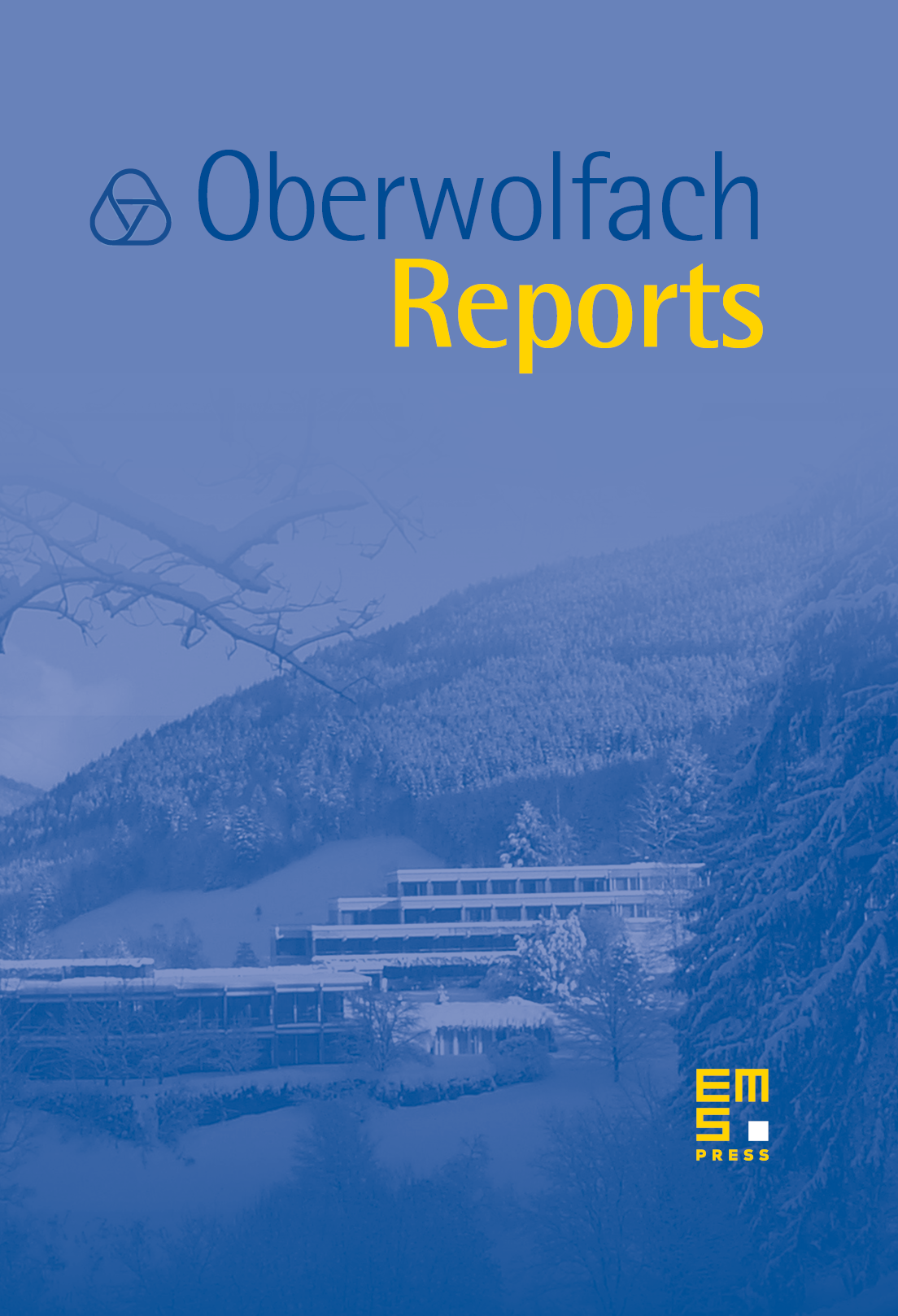Calculus of Variations
Giovanni Alberti
Università di Pisa, ItalyGerhard Huisken
Albert-Einstein-Institut, Potsdam, GermanyRobert J. McCann
University of Toronto, Canada

Abstract
This workshop attracted 44 participants, some 30 of them women. Its main themes could be divided into three large groups (i) differential geometry; (ii) physics and materials; (iii) optimal transportation and its applications.
The first general area encompassed the role of calculus of variations in differential geometry, including minimal surface theory and general relativity. One of the highlights was a substantial simplification of Almgren's formidable regularity theory for -valued functions, presented by Camillo DeLellis. This theory restricts the singularities which can occur on area minimizing currents in codimension higher than one. Another highlight was the confirmation by Del Pino (with Kowalczyk and Wei) of the counterexample long expected in dimensions to DeGiorgi's conjecture about the symmetry of transition profiles in the standard model of phase segregation. Further progress showcased at the 2008 meeting included a new approach to regularity theory for harmonic maps (Rivière, Struwe), and new existence and regularity results of Willmore surfaces from a PDE point of view (Kuwert–Schätzle, Rivière).
Exciting developments were also discussed concerning the structure of space-like surfaces in general relativity. Foliations by constant mean curvature surfaces and by Willmore surfaces are being used to describe the center of mass and quasi-local energy distribution of isolated gravitating systems: Tobias Lamm and Jan Metzger described their recent work with Schulze showing that Willmore surfaces behave in a similar way and can serve as an asymptotic center of mass.
Turning to physics and materials science, the highlights included a review presented by Elliott Lieb of variational approaches to calculating approximate quantum ground states for atoms and molecules. A related challenge in applied mathematics is to find a satisfactory explanation for the emergence of periodic patterns in physical models, a problem which has received important recent contributions described by Andrea Malchiodi, Sylvia Serfaty, and Gero Friesecke. These involved blending techniques from the calculus of variations with other kinds of mathematics — in one case as far off as number theory. Another highlight, falling somewhere between physics and the optimization problems described below, was the idiosyncratic lecture by Eitan Bachmat explaining how supermarket queueing, airline boarding, and optimal controlling of disk drive read/write operations can be boiled down to variational problems concerning the longest future directed geodesic in a Lorentzian spacetime.
Turning to the theory of optimal transportation and its connections to geometry, we recall the conference's opening lecture by Cedric Villani, addressing local to global curvature principles. In it he described his own work with John Lott (and independently Sturm), using the displacement convexity from optimal transportation to develop a theory of Ricci bounds in metric measure spaces. At the same occasion, he discussed the stability of the curvature conditions used by Ma–Trudinger–Wang to prove the regularity of optimal mappings. His first theme was reprised in the talk of Peter Topping, which used displacement convexity to give a new understanding of Perelman's monotonicity of entropy along the Ricci flow. Further talks by Figalli and Kim described new regularity results concerning free boundary problems in optimal transportation, and continuity of optimal maps for non-negatively cross-curved costs. The coordinate independence of these problems leads to phenomena which are governed by invariant structures such as curvatures, thus providing a strong point of thematic and methodological contact between this topic and the more geometric questions described in the first paragraphs above.
Only a small sampling from the July 2008 Oberwolfach Workshop has been mentioned above. Lectures which fell outside these three themes included those by Gianni Dal Maso, Yury Grabovsky, Manuel Ritoré, Tatiana Toro, and Tobias Weth, and there were lively informal discussions in which many young researchers participated. Still, we hope this brief summary gives some flavor for the exciting developments presented in the workshop, and which continue to take place in the Calculus of Variations.
Cite this article
Giovanni Alberti, Gerhard Huisken, Robert J. McCann, Calculus of Variations. Oberwolfach Rep. 5 (2008), no. 3, pp. 1707–1770
DOI 10.4171/OWR/2008/31